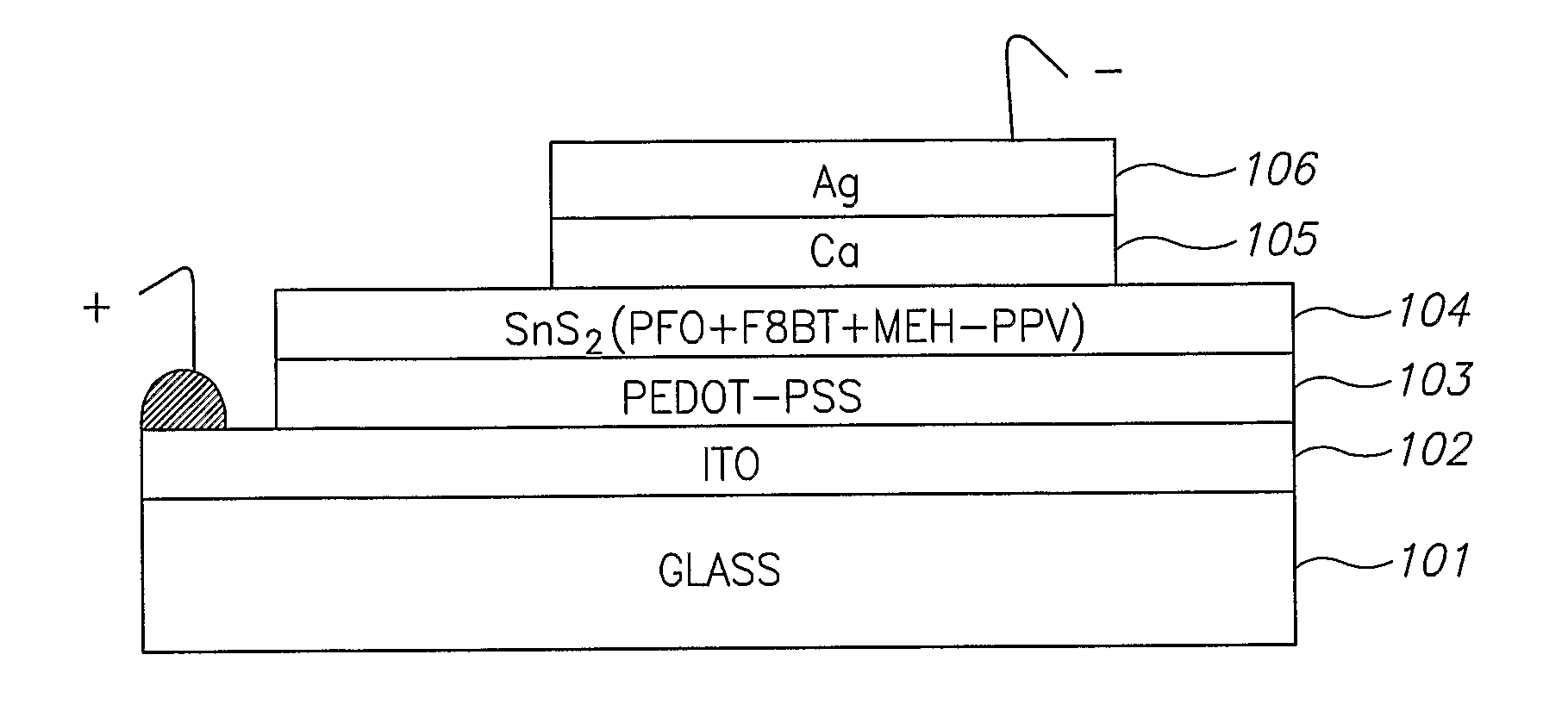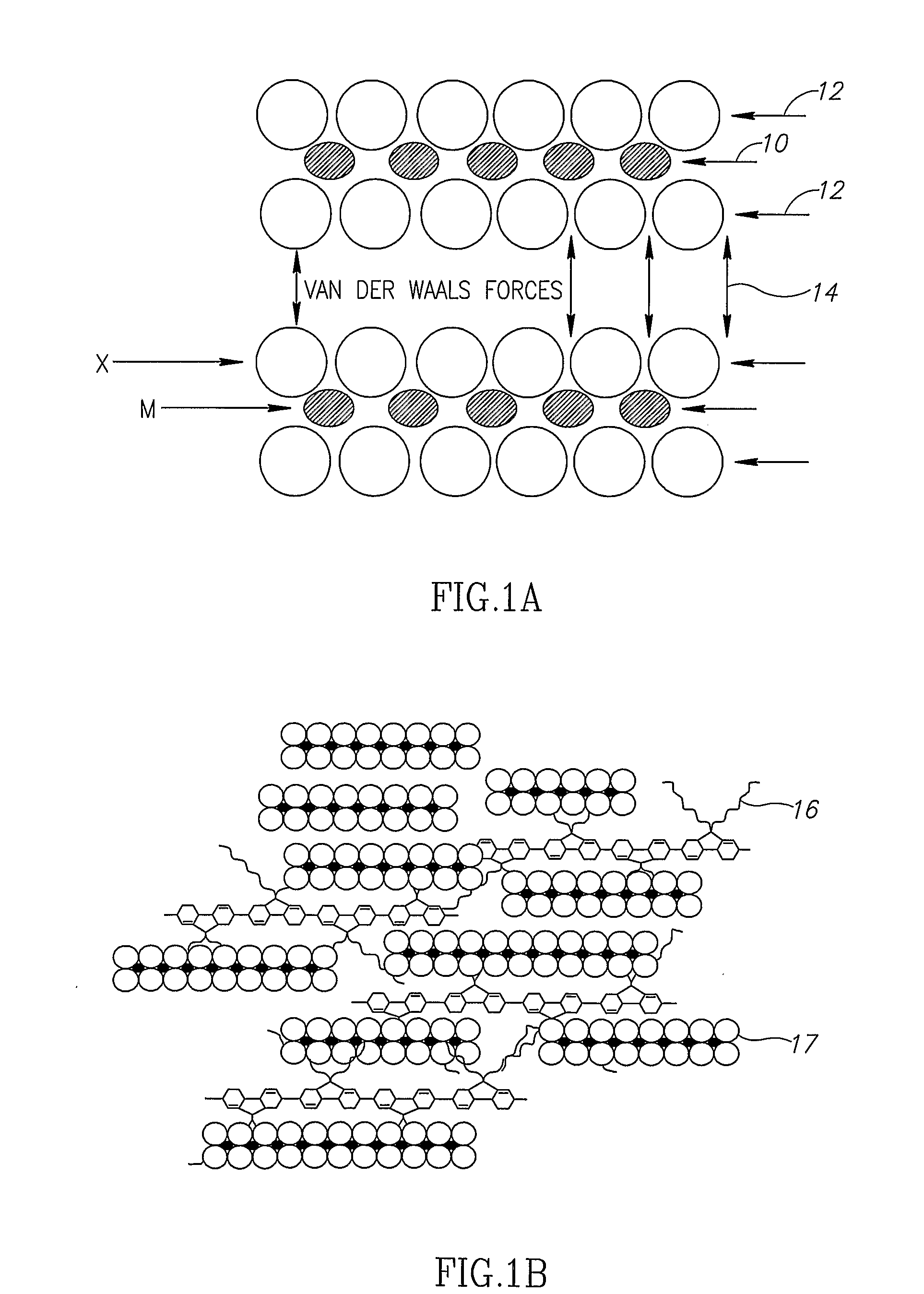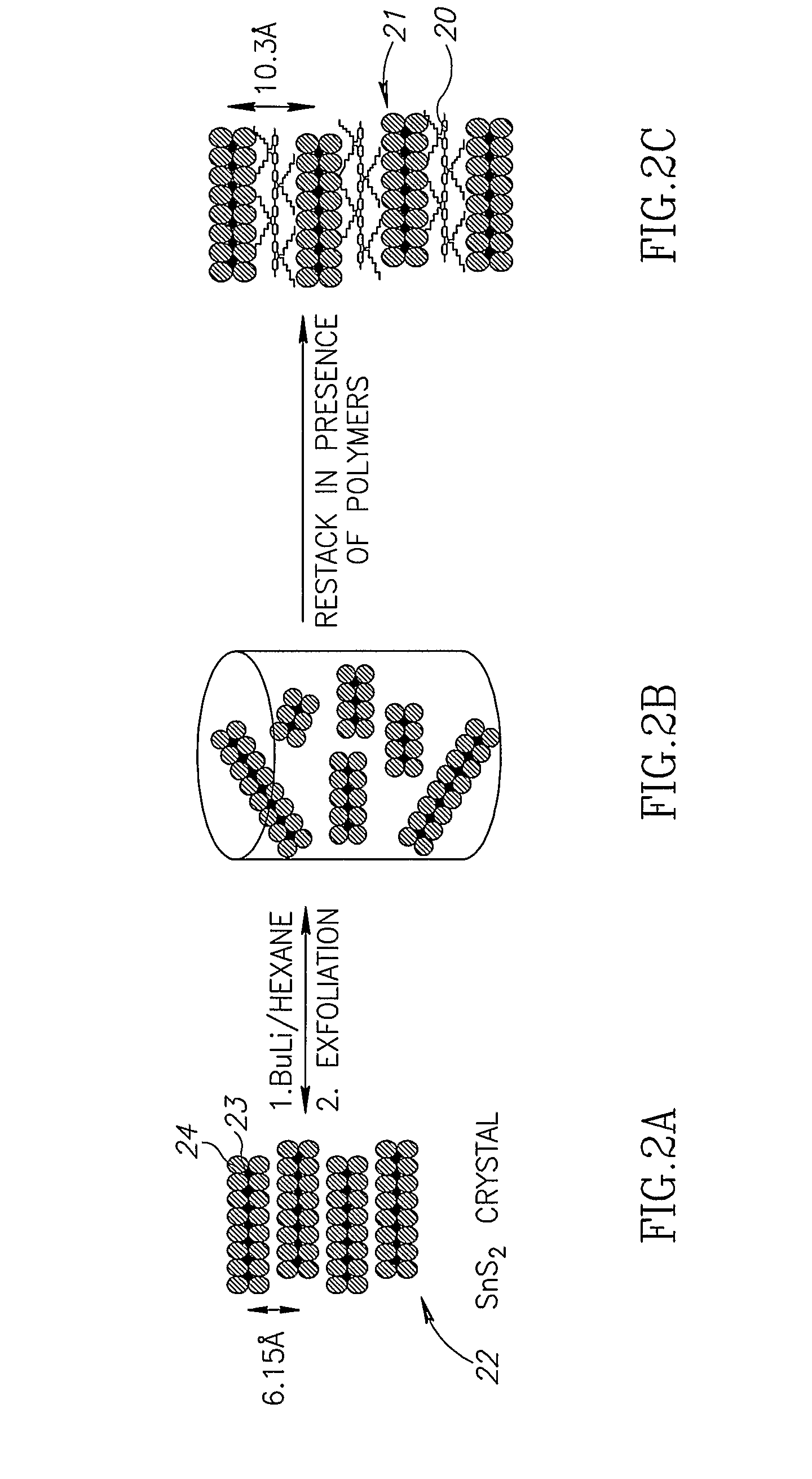Color controlled electroluminescent devices
a technology of electroluminescent devices and color control, which is applied in the direction of packaging, natural mineral layered products, synthetic resin layered products, etc., can solve the problems of less reliable and efficient, impede the efficient transport of charge carriers, and achieve the effect of improving color stability and light-emitting efficiency, and not hindering the charge transport properties of the matrix
- Summary
- Abstract
- Description
- Claims
- Application Information
AI Technical Summary
Benefits of technology
Problems solved by technology
Method used
Image
Examples
Embodiment Construction
[0061]Reference is now made to FIG. 1A, which illustrates schematically an example of an inorganic layered host matrix, suitable for incorporating the active organic EL materials used in the present invention. The matrix comprises metal atoms and chalcogen atoms, and is shown in FIG. 1A as a dichalcogenide layer-type structure, though layered metal monochalcogenides may also be used. The layered metal dichalcogenides may have the chemical formula MX2 wherein M represents a metal and X represents a chalcogen, such as oxygen, sulfur, selenium or tellurium. The structure of the layered metal dichalcogenides preferably includes one sheet 10 of metal atoms sandwiched between two sheets 12 of chalcogen atoms. In the layered metal dichalcogenides, the metallic component M is preferably selected from the transition metals such as titanium, zirconium, hafnium, vanadium, tantalum, niobium, molybdenum and tungsten or some non-transition metals, preferably tin. More preferred chalcogens are sul...
PUM
| Property | Measurement | Unit |
|---|---|---|
| percentage weight ratio | aaaaa | aaaaa |
| percentage weight ratio | aaaaa | aaaaa |
| excitation wavelength | aaaaa | aaaaa |
Abstract
Description
Claims
Application Information
 Login to View More
Login to View More - R&D
- Intellectual Property
- Life Sciences
- Materials
- Tech Scout
- Unparalleled Data Quality
- Higher Quality Content
- 60% Fewer Hallucinations
Browse by: Latest US Patents, China's latest patents, Technical Efficacy Thesaurus, Application Domain, Technology Topic, Popular Technical Reports.
© 2025 PatSnap. All rights reserved.Legal|Privacy policy|Modern Slavery Act Transparency Statement|Sitemap|About US| Contact US: help@patsnap.com



